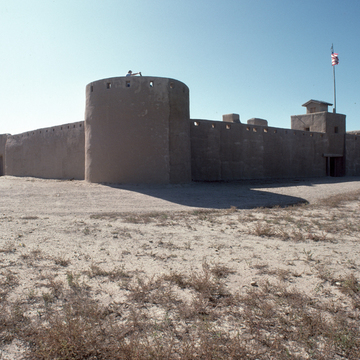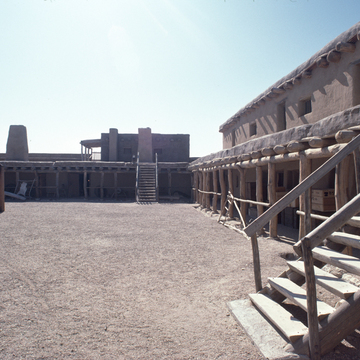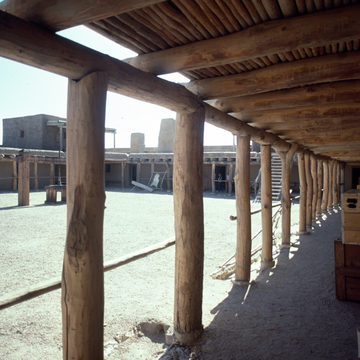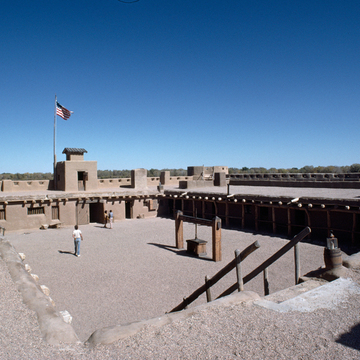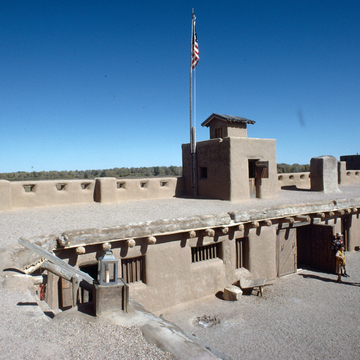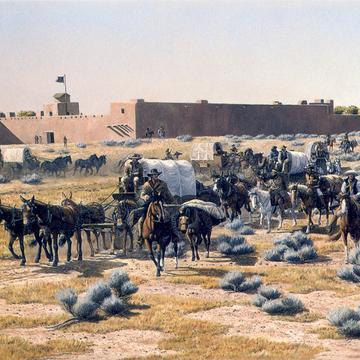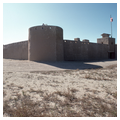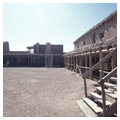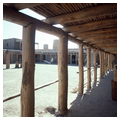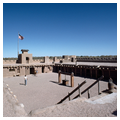Learning from the durable and fire-, heat, and cold-resistant adobe buildings of Taos and Santa Fe, brothers William and Charles Bent and their partner, Ceran St. Vrain, imported Mexican artisans to construct an adobe trading fort. They used local clay, mixing in straw and lamb's wool to help hold together their mud fortress on the north bank of the Arkansas River, then the boundary between the United States and Mexico. Like the original, this 1976 replica has catercorner towers with cannon slits. Bent's Fort was the largest of all the fur trade posts, measuring about 130 by 180 feet with walls 2 feet thick and 15 feet high. The heavy planks of the main gate were covered in sheet iron, with a tower above and double doors so that traders could deal through a wicket. Cactus planted atop the adobe walls also reinforced security. Inside, the courtyard is flanked by 38 rooms, with shed roofs
William Bent married a Cheyenne, Owl Woman, an alliance that fostered trade with her tribe. Apache, Arapaho, Comanche, Kiowa, and other Plains tribes also traded at Bent's Fort, exchanging buffalo robes, beaver pelts, and deer hides for goods from St. Louis. The fort also attracted French coureurs du bois and traders from Mexico. As many as 100 men worked at the fort during its 1840s heyday, when it boasted such refinements as an ice-house and a roof-top billiard room.
Bent's Fort helped shape the American Southwest in several ways. The Bents introduced ranching and farming to southeastern Colorado and replaced heavy Conestoga wagons with light Studebakers in the Santa Fe Trail trade. Little but foundations of the first fort remained by the 1970s, when the National Park Service began reconstruction in what had become a cornfield. Drawings by Captain James Abert, a U.S. Army engineer, and archaeological research guided the $3 million reconstruction. Living history exhibits and staff storytellers breathe life into this replica of the most celebrated adobe fort of the American Southwest.

